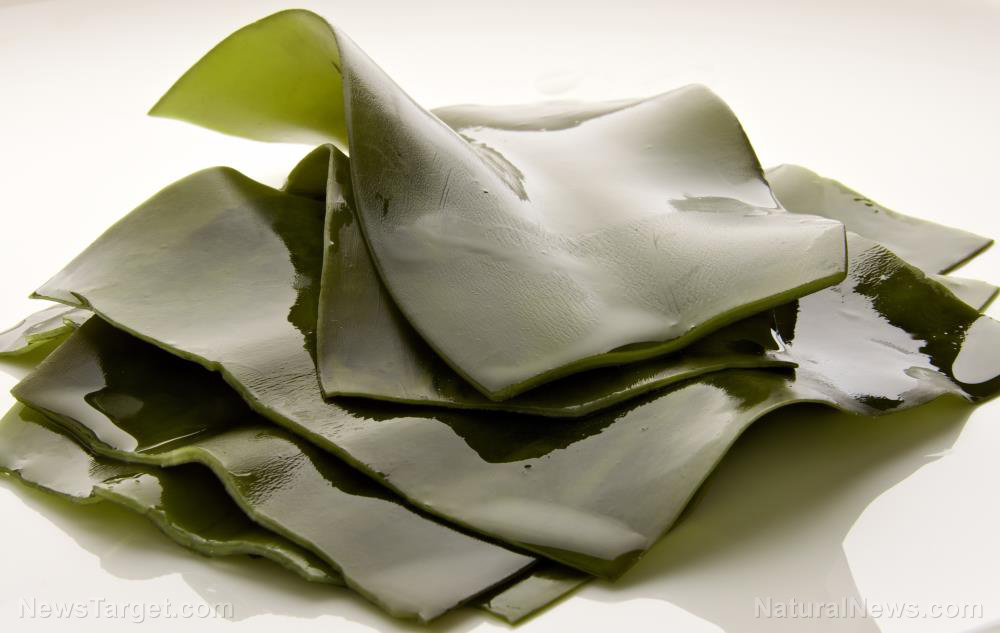
Advertisement
While seaweed has long been a staple of Japanese cuisine, it’s showing up on more restaurant menus and supermarket aisles in the US. So what gives?
For starters, seaweed is low in calories, fat and cholesterol. In addition, it’s also chock-full of essential vitamins and minerals, making it one of Japan’s healthiest kitchen ingredients.
The fact that it’s plant-based and high in both protein and fiber also places it well within the radar of health enthusiasts. Plus, its unique umami flavor is sure to have even the most reluctant consumer hooked!
Reasons to eat seaweed
Want to give seaweed a go? You won’t regret it! Listed below are some of the touted health benefits of seaweed, as well as the science behind them.
- Rich in iodine – Seaweed is one of the best sources of iodine, which it absorbs from seawater. Iodine is an important mineral required for proper growth and hormone production. For this reason, pregnant women and breastfeeding moms should aim to increase their iodine intake.
- Controls weight – Previous studies have shown that eating seaweed can help reduce the accumulation of fat in our bodies. In effect, seaweed promotes weight loss and better weight management. In fact, seaweed is so good at eliminating fat that it is a common ingredient in weight loss supplements.
- Supports digestion – Fiber in seaweed supports proper digestion. Seaweed also has a mild laxative effect that can help ease constipation.
- Has anti-diabetic effects – Research shows that fucoxanthin, an organic compound found in brown seaweed, has promising potential for the prevention of diabetes. Kombu seaweed, on the other hand, contains alginic acid, which is said to have anti-diabetic effects as well.
- Supports oral health – Eating seaweed might also be good for our teeth. Seaweed extract is believed to protect against cavities and inflammation in the gums. Seaweed also helps in keeping the mouth free from harmful bacteria, which could otherwise cause oral infections.
- Maintains optimal heart health – Seaweed has powerful cholesterol-lowering effects, which protect the heart in the long run. Seaweed also helps boost blood circulation to prevent high blood pressure, a major risk factor for heart disease, stroke and heart failure.
- Slows down skin aging – The nutrients, amino acids and antioxidants in seaweed all work together to nourish the skin and protect it from inflammation, excessive sun exposure and the harmful effects of environmental pollutants like smoke. Over time, seaweed can also help minimize signs of aging.
- Strengthens bones – Seaweed is rich in calcium and magnesium, both of which are essential minerals for bone health.
Seaweed recipes (that aren’t sushi)
Seaweed is simple enough to incorporate into a nutritious diet without signing up for Japanese cooking classes. Whip up these seaweed recipes oozing with umami goodness. You’ll fall in love with seaweed in no time!
Kombu tsukudani (Simmered kombu)
This side dish, which is made with kombu seaweed, is a staple in Japanese households. You can eat it on its own as an appetizer or pair it with a bowl of steamed rice.
Ingredients:
- 1/2 cup water
- 3 tablespoons soy sauce
- 1 tablespoon dried kombu
- 1 tablespoon sake
- 1 tablespoon mirin
- 1 tablespoon sugar
- 1 teaspoon rice vinegar
- 1 teaspoon sesame seeds
Preparation:
- Soak dried kombu in water for 15 minutes or until soft.
- Drain the kombu, then slice them into thin strips.
- In a small pot, pour in the rice vinegar and 1/2 cup of water.
- Cook kombu for 10 minutes over medium-low heat.
- Season with soy sauce, mirin, sake and sugar.
- Continue cooking until the liquid has reduced.
- Sprinkle with sesame seeds. Serve on a small dish.
Hijiki seaweed salad
This salad is another classic side in Japanese cuisine. It’s simmered together with edamame, carrots and lotus root in dashi broth to create a rich and heartwarming umami sensation like no other.
Ingredients:
- 3 oz. konjac
- 3 oz. carrot
- 1.3 oz. lotus root, pre-boiled
- 4 cups water
- 2 cups dashi (Japanese soup stock)
- 1/2 cup shelled edamame
- 1/2 cup dried hijiki seaweed
- 4 tablespoons soy sauce
- 4 tablespoons mirin (rice wine)
- 2 tablespoons sugar
- 1 tablespoon olive oil
Preparation:
- Soak dried hijiki seaweed in 4 cups of water for 30 minutes.
- Drain the seaweed and wash it under running water.
- Boil the konjac for 3 minutes. Let cool, then slice thinly.
- Julienne the carrot and slice the lotus root thinly.
- Heat oil in a pot over medium heat. Cook the carrot, lotus root, hijiki and konjac.
- Pour in the dashi and bring to a boil.
- Pour in the mirin, soy sauce and sugar.
- Reduce heat to simmer. Cook covered for 30 minutes.
- Add edamame. Cook uncovered until the sauce is reduced.
- Transfer onto a plate and serve.
Rolled seaweed and egg omelet
This extra-special seafood-themed omelet should be filling enough for brunch. It’s also ridiculously simple to make as it requires just five ingredients!
Ingredients:
- 5 large eggs
- 1 1/2 dried seaweed sheets
- 1 tablespoon mirin
- 1/4 teaspoon fine sea salt
- Olive oil
Preparation:
- In a bowl, beat the eggs.
- Pour it into another bowl through a sieve. Whisk in mirin and salt.
- Cut the dried seaweed sheets in half.
- Heat oil in a pan over medium-low heat.
- Pour some of the egg mixture into the pan. Tilt the pan to spread the mixture.
- Once the edges are cooked, place one seaweed sheet in the middle.
- Using a spatula, fold the edges into the middle to form a roll.
- Take out the finished roll or push it to one side of the pan. Repeat the process to make more rolls.
- Let the rolled omelets cool for 5 to 10 minutes.
- Slice the rolled omelets into bite-sized pieces. Serve.
Seaweed is a vitamin and mineral jackpot. To reap its nutritional benefits, snack on roasted nori sheets, cook kombu with soups or incorporate kelp into a classic green salad to amp up the flavor.
Sources:
Advertisements







